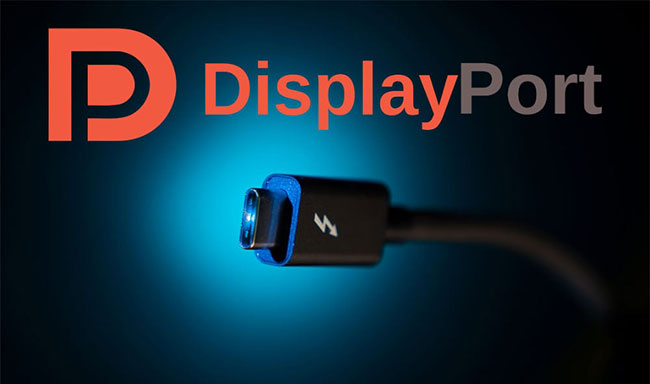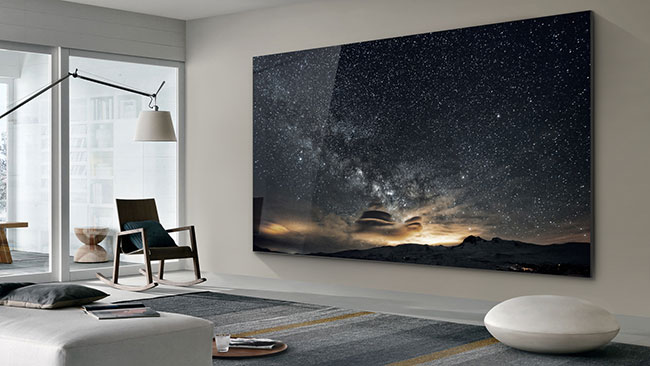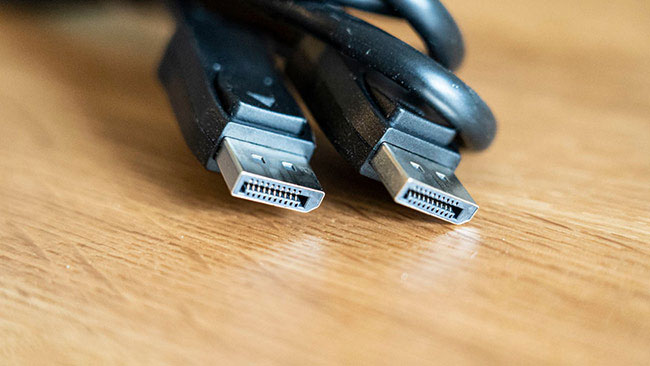Things to know about DisplayPort 2.0
Technology is developing at a fast pace. The addition of the new DisplayPort 2.0 standard, announced in June 2019, creates an interesting advantage for consumers who have a superior connection over today's HDMI cables.
While HDMI 2.1 certainly has its own benefits, the new DisplayPort 2.0 specification allows for up to a great 16K resolution, along with higher refresh rates. This is all thanks to nearly three times the bandwidth of DisplayPort 1.4a.
Here is everything you need to know about DisplayPort 2.0.
When will DisplayPort 2.0 appear?
The Video Electronics Standards Association (VESA) is an organization that standardizes DisplayPort technology. The organization said that the first products with DisplayPort 2.0 will be launched by the end of 2020.

Resolution, refresh rate and color
Typical DisplayPort connection includes 4 lanes. Each lane has a set of dedicated twisted pair wires. According to VESA, the new DisplayPort 2.0 standard pushes the total speed up to 77.4 gigabits per second. That's a significant increase over DisplayPort 1.4a, achieving only 25.92 gigabits per second in all 4 lanes. Costs are also smaller by switching to the encoding scheme 128b / 132b.
For a single monitor, DisplayPort 2.0 handles 15360 × 8460 (16K) resolution with HDR at 60Hz and up to 30 bits per pixel (30bpp). This requires VESA's Display Stream Compression (DSC 1.2a) to push the high number of pixels beyond current hardware limitations. DSC promises to bring a 'lossless' experience, meaning no loss of image quality due to compression.

DisplayPort 2.0 also supports 10240 x 4320 (10K) resolution without HDR at 80Hz and up to 24bpp. This single screen resolution does not require compression.
If you don't want to run screens with such billboard sizes, DisplayPort 2.0 provides excellent resolution for dual screen setups. For example, you can run two monitors with a resolution of 7680 × 4320 (8K) and HDR at 120Hz with 30bpp (requires DSC). If you want a higher refresh rate, lower the resolution to 3840 × 2160 (4K) to get 144Hz at 24bpp, no compression needed.
Setting with three screens is also supported. DisplayPort 2.0 allows 10240 × 4320 (10K) at 60Hz and 30bpp when compressed. And like a dual monitor setup, you can lower the resolution to get a better refresh rate: 3840 × 2160 (4K) at 90Hz and 30bpp without compressing it on three screens.
Please be aware of 30bpp support listed with some resolutions. It's a 30-bit color, a significant upgrade over the typical 24-bit color. Of which 24-bit supports 26.7 million different colors, 30-bit exponentially increases to more than 1 billion colors, necessary for HDR10.
New and old connectors
DisplayPort 2.0 uses the same traditional DisplayPort connector. It is backward compatible with all previous DisplayPort standards.

Like DisplayPort 1.4, the new standard works with USB-C ports that support DP Alt Mode. Here, you can use a single cable for both video and data, allowing high-speed data delivery without affecting video performance. However, not all USB-C ports support DP Alt Mode.
In addition to USB-C, DisplayPort 2.0 takes advantage of the physical interface Thunderbolt 3, a more unified standard for the future. Using that physical layer allows DisplayPort 2.0 to use the 128 / 132b encoding scheme more effectively and has a much lower operating cost.
However, with Thunderbolt 3 merging with USB 4, users expect this integration will make DisplayPort 2.0 the de facto cable of choice for high-end displays.
Which cable to use depends on your needs. According to Anandtech, the full DisplayPort 2.0 experience requires active (active) cabling with transceivers on both ends, like Thunderbolt 3. That means they will be more expensive. But for 40Gbps or smaller bandwidth requirements, you can still use passive (passive) cables.
The energy saving and other features
In addition to bandwidth improvements, DisplayPort 2.0 also has a few feature changes, one of which is Panel Replay .
This new feature optimizes the way the display refreshes to help control power consumption and heat. For example, with Panel Replay enabled, a smaller device with a high-resolution screen updates only the on-screen change elements. This cuts down on power requirements when used, especially on static websites or other content. It can also help speed up device charging when left or charging.
VESA DSC is now a mandatory feature for DisplayPort 2.0 certified devices. This almost 'lossless' compression format enables ultra-high refresh and resolution modes for DisplayPort 2.0.
The last but not least feature of DisplayPort 2.0 is multithreading. A single DisplayPort 2.0 cable processes multiple image streams, sending them to a hub before distributing the streams to different displays.
You should read it
- Officially has DisplayPort 1.3 standard to support 5K screen
- The new DisplayPort specification enables 16K video transmission via USB-C
- Differentiate DisplayPort and HDMI
- After more than 2 years of being announced, why is DisplayPort 2.0 still not really popular?
- How does DisplayPort 2 stand out?
- DisplayPort 2.0 officially launched, supporting dual 8K display at 120Hz
 Compare Microsoft Surface 3 and Surface Pro 3
Compare Microsoft Surface 3 and Surface Pro 3 How to Get a PLEO
How to Get a PLEO How to Play with a Sphero 2.0
How to Play with a Sphero 2.0 How to Start a FIRST Robotics Competition Team
How to Start a FIRST Robotics Competition Team How to Build a Model of a Swarm Robot
How to Build a Model of a Swarm Robot How to Build a Simple Robot
How to Build a Simple Robot